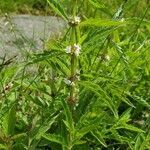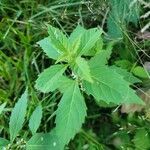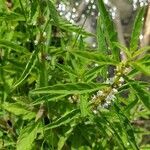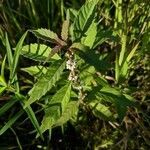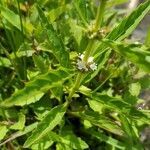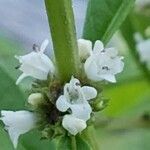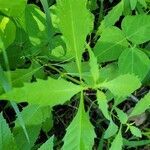A slender herb. It grows 10-40 cm tall. The stem is simple or occasionally branched. It arises from a small thick tuber. It can have runners. The stems are square. The leaves are opposite and narrowly sword shaped. They are pointed and have coarse teeth. The flowers are small and white. These are in clusters at the leaf nodes.
